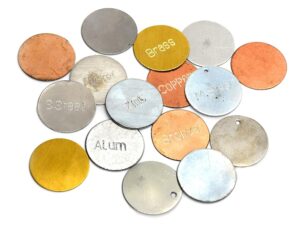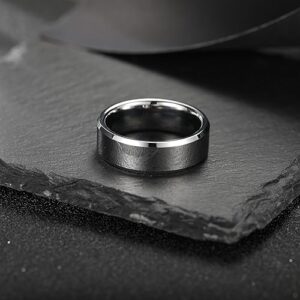Choosing between platinum and white gold isn’t as simple as picking the shiniest metal.
If you’re shopping for an engagement ring, a gift for someone special, or even a treat for yourself — chances are you’ve already asked the big question:“What’s the real difference between platinum and white gold?”
And more importantly… which one is better for me?
You’re not alone. This is one of the most common debates among jewelry buyers — and trust me, after helping friends, family, and clients navigate this exact decision, I know how confusing it can be.
Ready to Find Your Perfect Metal?
Let’s dive in and compare platinum vs white gold—in a way that actually makes sense.And by the end, you’ll know exactly which one is right for your heart and your wallet.
Table of Contents
What is Platinum?
Let’s talk about platinum — a name you often hear when people mention fancy rings, watches, or expensive jewelry.
Platinum is a white metal that comes straight from the Earth. Unlike white gold, it doesn’t need any extra coating to look shiny — its silver color is completely natural.
It’s also one of the rarest metals in the world. Just to imagine how rare it is: if you gathered all the platinum ever mined and poured it into an Olympic-sized pool, the level wouldn’t even cover your ankles!
What is Platinum Made Of?
Jewelry made with platinum is usually about 90–95% pure platinum. That means what you’re wearing is mostly real platinum — not mixed up with too many other metals.
The remaining 5–10% might include metals like iridium or ruthenium to make it a bit harder and easier to work with.
✓ Good to know: This high purity is also what makes platinum hypoallergenic — perfect for people with sensitive skin!

What is White Gold?
Now, let’s talk about white gold — the cool, shiny cousin of yellow gold.
White gold isn’t found in nature. It’s actually yellow gold that’s been mixed with white metals like palladium, nickel, or silver to change its color and make it stronger.
After it’s mixed, it’s usually plated with rhodium, which gives it that bright white, mirror-like finish we all love.
What White Gold Is Made Of
White gold is a gold alloy, which means it’s mixed with other metals to create that silvery-white color.
The most common types used in jewelry are:
- 18k white gold = 75% gold + 25% other white metals (like palladium, nickel, or silver)
- 14k white gold = 58.5% gold + 41.5% alloy
Why this matters:
- Higher gold content (like 18k) means the jewelry is softer and has a richer, warmer gold color.
- Lower gold content (like 14k) makes the jewelry harder and more durable, but it has a little less real gold.
Bonus tip: Rhodium plating makes white gold shine brighter — but it wears off over time, so you’ll need to re-plate it every 1–2 years to keep it looking brand new.

Platinum vs White Gold
Choosing between platinum and white gold? Let’s break down their differences to help you decide which metal suits your style, budget, and lifestyle.

Color and Shine
- Platinum: has a naturally white-silver hue that doesn’t fade over time. Its color is consistent throughout the metal, so even if it gets scratched, it retains its silvery tone.
- White Gold: has a slightly warmer white tone(Grey), achieved by mixing yellow gold with white metals like nickel or palladium. It’s coated with rhodium to give it a bright, reflective white finish—but this plating can wear off over time and may need reapplication.
Weight and Density
- Platinum: Heavier and feels more solid — great if you like your jewelry to feel strong and sturdy.
- White Gold: Lighter and easier to wear every day — perfect if you want something comfortable.
Price Comparison
- Platinum: More expensive because it’s rare and heavy, making it a more premium choice.
- White Gold: Less expensive but still looks elegant, making it a good budget-friendly option.
Maintenance Needs
- Platinum: Develops a natural patina over time that some people love. Can be polished to restore its shine.
- White Gold: Needs regular rhodium re-plating to keep its bright white finish looking fresh.
Skin Sensitivity
- Platinum: Hypoallergenic and ideal for sensitive skin.
- White Gold: May contain nickel, which can cause allergic reactions in some individuals. While Rhodium plating helps protect the jewelry, but it can wear off over time. This might expose nickel, which can irritate sensitive skin.
Durability
- Platinum: Very strong and long-lasting. It can get scratched, but the metal stays—it just moves a little. Good choice if you want something that lasts a lifetime.
- White Gold: Also strong, but it can lose small bits of metal when scratched or polished. It shows scratches more and needs more care to keep it shiny.
Resizing and Repair
- Platinum: More difficult and expensive to resize or repair due to its hardness.
- White Gold: Easier and more affordable to resize or repair.
Platinum and Gold White Pros and Cons
When choosing between platinum and white gold, understanding the pros and cons of each metal can help you make an informed decision. Let’s take a quick look at the key benefits and potential downsides of both metals to help you find the perfect match for your jewelry.

Which Metal for What?(Engagement Rings and Daily Jewelry)
When it comes to engagement rings and everyday jewelry like bracelets, earrings, and pendants, platinum and white gold each have their own set of perks. Let’s explore how both metals perform in these different jewelry types — from engagement rings to gemstone pairings.
| Jewelry Type | Platinum | White Gold |
|---|---|---|
| Engagement Rings | Best for long-term wear and strength. Great choice for everyday use. | More affordable, but requires periodic rhodium plating to maintain shine. |
| Bracelets & Earrings | Highly durable and low-maintenance—ideal for frequent use and daily wear. | Lightweight and stylish—great for occasional wear and special occasions. |
| Gemstone Settings | Secure and enhances both diamonds and colored gemstones beautifully. | Elegant look with diamonds and gems, but may need maintenance over time. |
How to Choose Between Platinum and White Gold
Active Lifestyle? → Choose Platinum
- Strong and durable for daily wear
- Great for rings and bracelets
- Ideal if you’re always on the move or work with your hands
Want Lightweight Jewelry? → Go for White Gold
- Lighter than platinum
- More comfortable for all-day wear
- Perfect for earrings, pendants, and delicate designs
Sensitive Skin? → Platinum is Best
- Hypoallergenic and safe for sensitive skin
- White gold may contain nickel (a common allergen)
On a Budget? → Pick White Gold
- More affordable than platinum
- Offers a similar look at a lower price
Frequently Asked Question's
- Platinum: More durable, hypoallergenic, and long-lasting.
- White Gold: More affordable but requires maintenance and is less durable.
Yes, platinum is usually more expensive due to its rarity and purity.
White gold is popular for its similar look to platinum but at a lower price. It has a bright, shiny finish and pairs well with various gemstones.
No, platinum doesn’t turn yellow. It maintains its natural white color over time without tarnishing.
- Rhodium plating wears off over time, requiring reapplication.
- It can cause allergic reactions if it contains nickel.
- Less durable than platinum and more prone to scratching.
Platinum is more expensive and heavier than white gold, which may not suit everyone.
Platinum is safe in water. It doesn’t rust, fade, or get damaged, even if you wear it while swimming or showering. That’s why it’s a great choice for everyday jewelry.
Avoid white gold if you have a nickel allergy or if you don’t want to deal with reapplying rhodium plating.
Yes, platinum is perfect for daily wear because it’s durable and doesn’t tarnish.
Final Thoughts: Platinum or White Gold—What Truly Fits You?
When it comes to choosing between platinum and white gold, it’s not just about looks—it’s about what fits you. Both metals offer beauty and elegance, but they shine in different ways depending on your lifestyle and priorities.
If you’re looking for durability, hypoallergenic properties, and timeless luxury, platinum is hard to beat. But if budget, lighter weight, and a brilliant white finish are higher on your list, white gold might be your perfect match.
Whichever you choose, the best decision is one that reflects your personal style, comfort, and values.
What’s Your Pick?
Which metal wins your heart—Platinum for strength and elegance, or White Gold for shine and savings?
Drop a comment below and share your choice—we’d love to hear from you!



